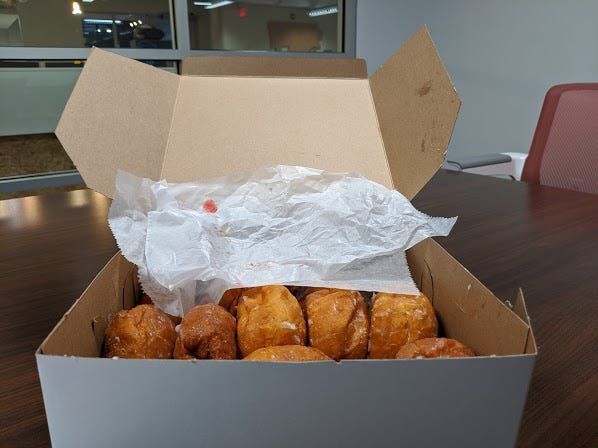State of Transit: A Hamtramck Adventure

Special delivery! This article is an expansion of a Twitter thread from February 2020 .
Gather ‘round and let me tell you a tale from the final month of the Beforetimes.
’Twas a chilly Tuesday afternoon in February 2020 after a busy morning of classes and labs at Wayne State. My school day ended at 2:30pm, and I had a meeting at TechTown in New Center to attend at 6. Too long to stay in the building, not enough time to get home and back. It happens — just find a coffee shop, right?
But this wasn’t any old Tuesday. It was Fat Tuesday, which in Metro Detroit means one thing: Pączki. Lots of pączki. Especially in Hamtramck, a largely Polish community about five miles north of campus. And I wasn’t going to pass up my chance to get some.
What turned this into an adventure was the means of getting there. I don’t have my car with me when I’m on campus . And such began the planning of my most spontaneous (and delicious!) trip on public transportation to date.
Get Outta Midtown
There are no direct routes between Midtown and Hamtramck. MoGo, Detroit’s bikeshare system, has no docking stations in the area. For most of the day, riders need to reach DDOT Routes 12 or 52, which run north and south through Detroit’s east side, or Route 38, which runs east and west along Caniff through the North End neighborhood.
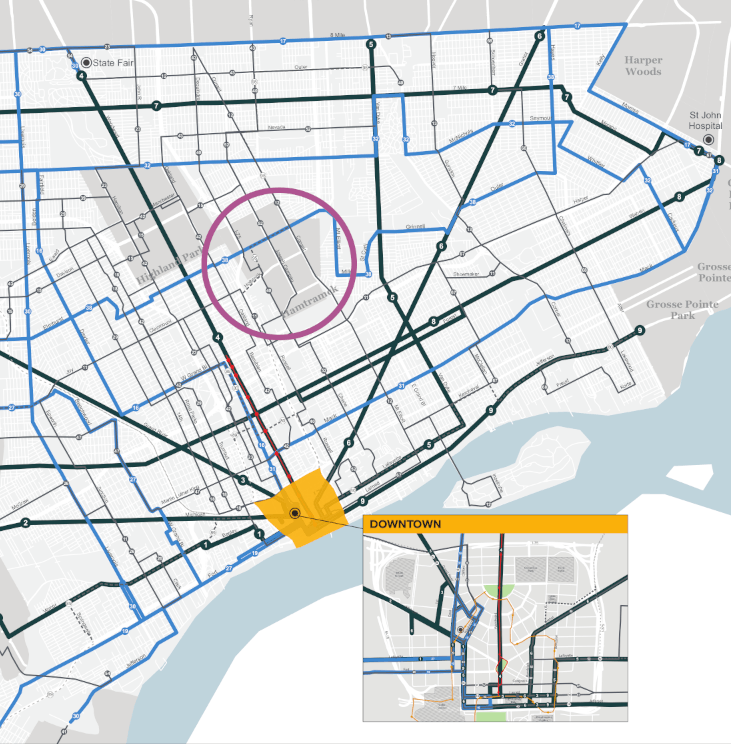
An inset of the DDOT system map. Hamtramck is outlined in purple. Note that there are no major routes (dark green) between downtown Detroit and Hamtramck. (Source: DDOT )
In my case, the timing was lucky. I was starting this trip at the head of rush hour, which meant I had access to DDOT’s six “Part-Time” express routes between downtown and various city neighborhoods. One of these routes, the Ryan Express, connects the city center to the Farwell neighborhood near the northern city limits.
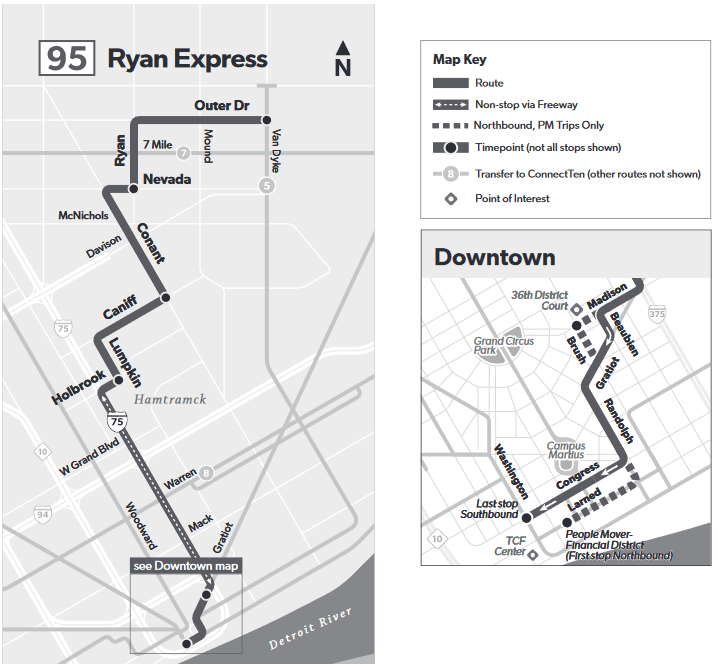
The Ryan Express, one of DDOT’s five peak-hour-only express routes. There are only five northbound trips, which are scheduled between 3:30pm and 6:00pm. (Source: DDOT )
On its way to Outer Drive the 95 stops along Caniff thanks to an agreement between DDOT and the city, which meant getting to Hamtramck was as easy as getting downtown. And for me, the trip to Spirit Plaza from Wayne State was a journey well traveled.

All aboard the pączki train (or rather, streetcar)
Hit the Road, DDOT
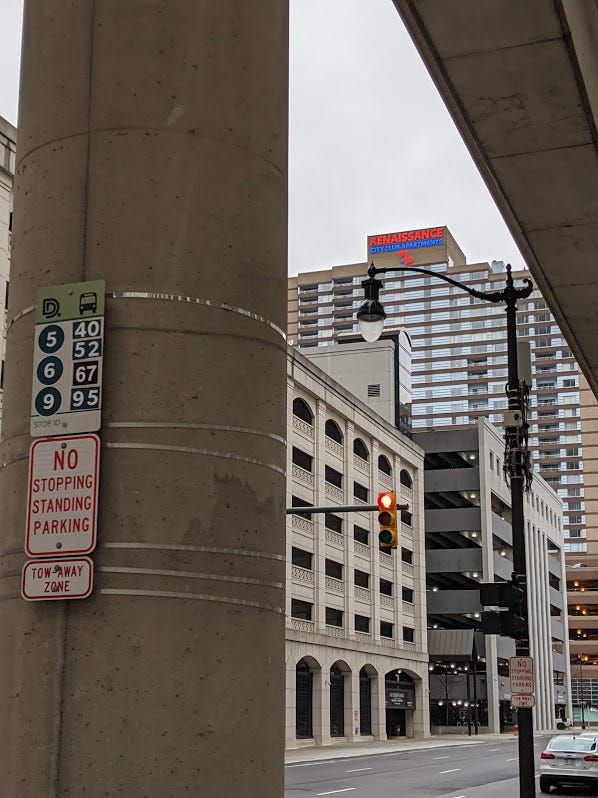
Larned and Woodward: Served by DDOT routes 5, 6, 9, 40, 52, 67, and 95.
Larned and Woodward, adjacent to Spirit Plaza, serves as a satellite hub of sorts for DDOT routes traveling into and out of downtown. It’s easily accessible from the end of the QLINE and the Financial District People Mover station. In some capacity, this stop serves 21 routes between DDOT and SMART during peak weekday hours.
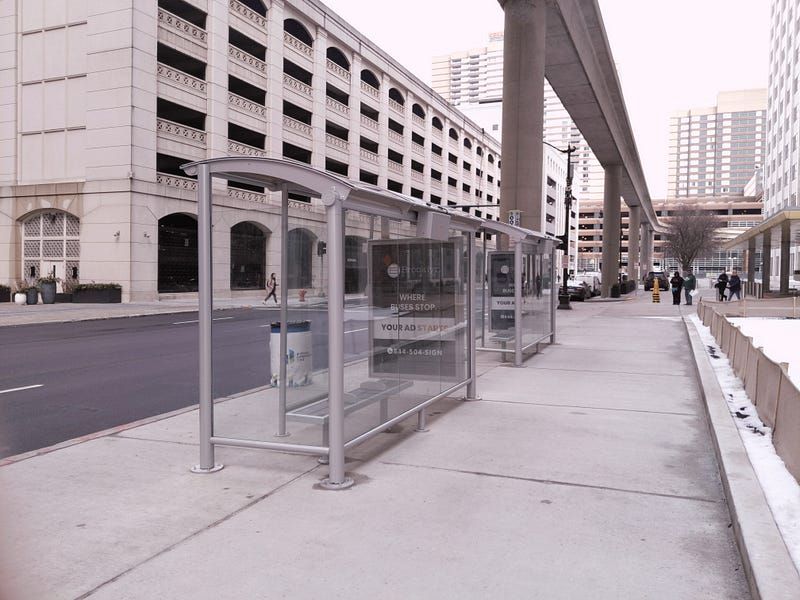
The DDOT shelters where Route 95 departs for Hamtramck. (Source: Nixill )
Similar to SMART’s Park and Ride routes, DDOT’s express routes use the highway whenever possible. Downtown to Hamtramck via I-75 rivals driving time, and without the need to park it’s actually faster — ask anyone who lives in Hamtramck how much time and tight maneuvering it takes to find a spot along the street.
Ten minutes after leaving downtown, I was in line at a Hamtramck bakery.
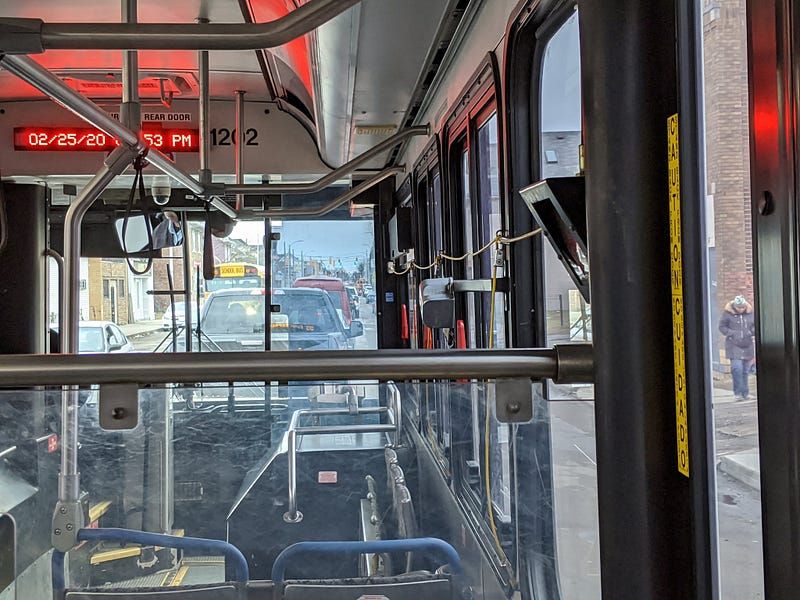
Fat Tuesday is no joke in Hamtramck. Good luck navigating the gridlocked streets in search of a parking space.
Right at the corner of Caniff and Joseph Campau is New Martha Washington Bakery, one of several which were churning out enough pączki to feed the whole city in one day, let alone one meeting. And feed my meeting they did: One quick text of “Hey I’m in Hamtramck for pączki” later and next thing I knew, I was out the door with a baker’s dozen in hand.
Only one snag: That ride on the 95 up to Hamtramck was a one-way trip. The express routes don’t run into downtown during the evening commute.
I had to travel back into town the long way.
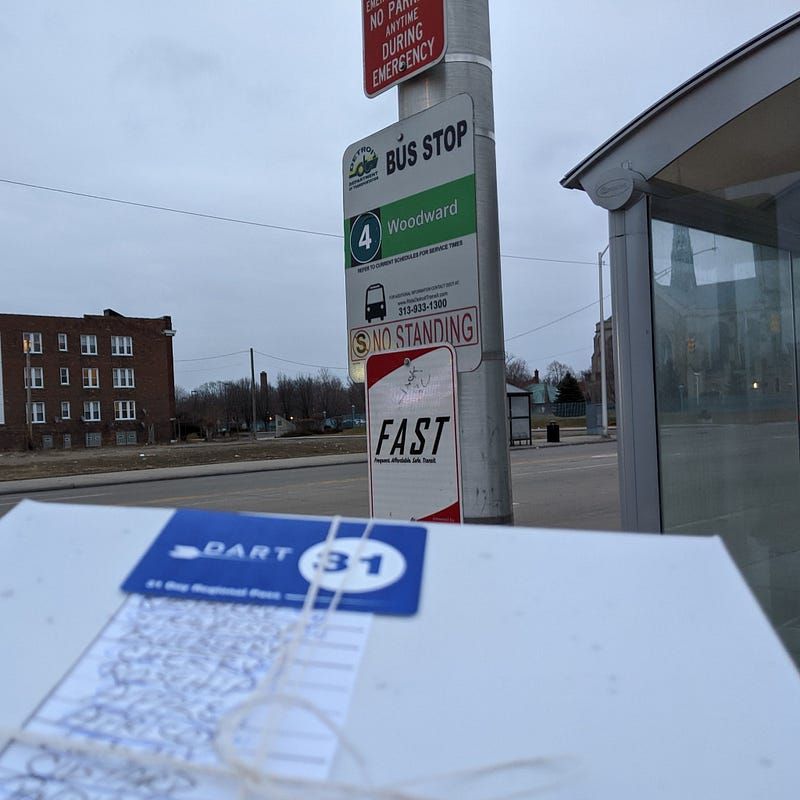
Getting the pączki back to TechTown from Hamtramck took over an hour and required a transfer from Route 38 to Route 4 at Woodward and Trowbridge.
The State of Transit: A system designed for a specific type of commuter
What can we learn from this quick diversion?
As with most cities in the United States, Metro Detroit’s existing transit network is primarily designed to serve downtown commuters. Our highest priority routes follow a hub-and-spoke model along the major arterials, boosting service into the city during mornings and out of the city in the evenings.
In the age of COVID-19, this model has been turned inside out. More people than ever are working downtown office jobs from their own homes, and it’s questionable whether we’ll see a full return to shared office spaces even after the pandemic fades into memory.
To be successful, future transit developments must focus towards getting people wherever they need to go, between any two points in a metro region. This has always been true, but now it is absolutely critical. The reverse commute. Suburb to suburb. Across town at night. Transit advocates often point to Toronto as an example of a city that has this design pattern on lock.
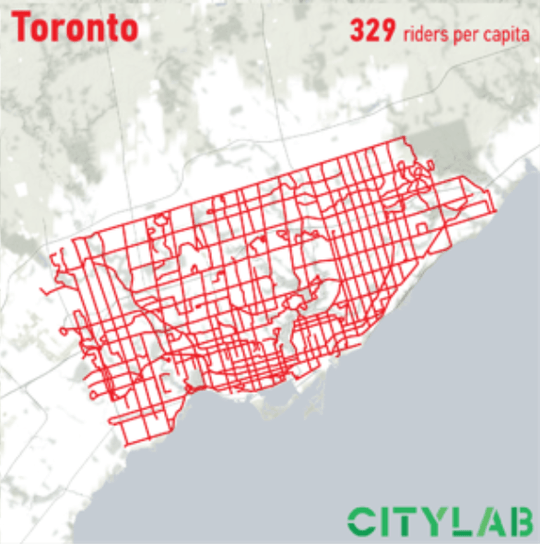
Get there from anywhere! (Source: Jonathan English / Bloomberg City Lab )
This is the greatest challenge transit in Metro Detroit must overcome, and it will take immense planning. After over 50 years of sprawl and auto-oriented development we no longer have a single center of population and work, and this must be considered when drafting future regional transit plans.
I should’ve been able to get out of Hamtramck as easily as I got there. Building a transportation network that is truly attractive to all residents. To attract residents from across the metro, especially suburban choice riders — those with personal vehicles who ride transit out of convenience — requires enabling fast downtown travel and fast inter-suburban travel.
The Regional Transit Authority is expected to announce a new Master Plan in early 2021. It’s possible for us to have a system with everyone in mind, but it’ll take all of us working as advocates to make this a possibility.
Oh, and if you were wondering: The pączki arrived safely.
